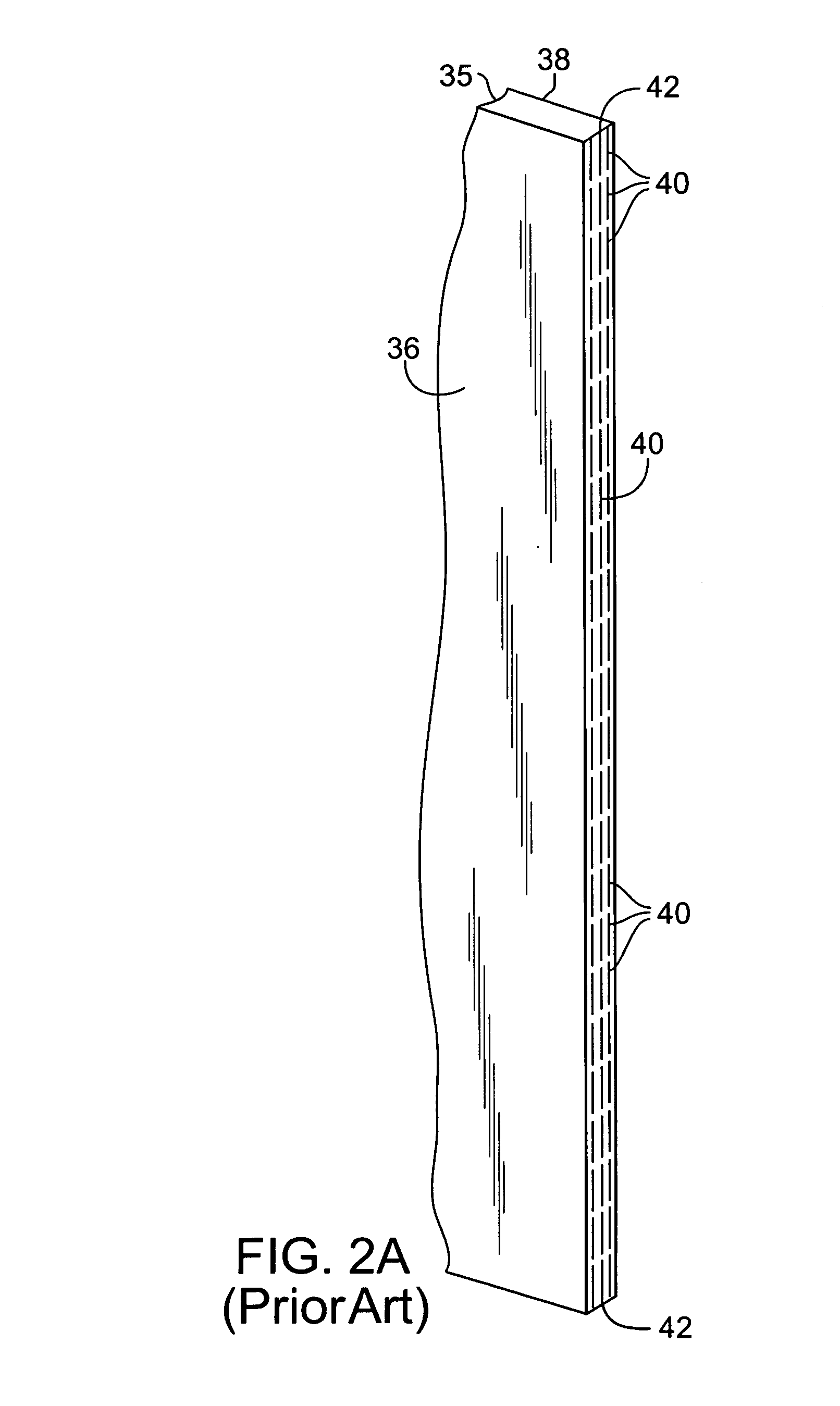Method of forming passive electronic components on a substrate by direct write technique using shaped uniform laser beam
a laser beam and substrate technology, applied in the direction of manufacturing tools, capacitor details, capacitor manufacture, etc., can solve the problems of unfavorable affecting the dimensional precision quality of the array, and achieve the effect of sufficient straightness, accuracy, and dimensional precision
- Summary
- Abstract
- Description
- Claims
- Application Information
AI Technical Summary
Benefits of technology
Problems solved by technology
Method used
Image
Examples
Embodiment Construction
[0035] Embodiments of the present invention construct arrays of passive electronic components, such as resistors and capacitors. The term “substrate” used in connection with passive electronic components herein refers to single layer structures as well as consolidated stack, multilayer, and laminated multi-layer structures.
[0036] Exemplary preferred embodiments of the present invention are described first with reference to the formation of an array of discrete chip resistors and then with reference to the formation of a substrate layer on which is formed an array of conductive material regions.
[0037] With respect to the formation of chip resistors 52, substrate 10 is preferably a fired ceramic material of 96% alumina for thick film resistors. A preferred method of forming an array of resistive material regions 32 and electrical conductor lines 18 and 20 on substrate 10 entails coating first and second major surfaces 14 and 16 of ceramic substrate 10 with an electrically conductive...
PUM
| Property | Measurement | Unit |
|---|---|---|
| wavelength | aaaaa | aaaaa |
| wavelength | aaaaa | aaaaa |
| wavelength | aaaaa | aaaaa |
Abstract
Description
Claims
Application Information
 Login to View More
Login to View More - R&D
- Intellectual Property
- Life Sciences
- Materials
- Tech Scout
- Unparalleled Data Quality
- Higher Quality Content
- 60% Fewer Hallucinations
Browse by: Latest US Patents, China's latest patents, Technical Efficacy Thesaurus, Application Domain, Technology Topic, Popular Technical Reports.
© 2025 PatSnap. All rights reserved.Legal|Privacy policy|Modern Slavery Act Transparency Statement|Sitemap|About US| Contact US: help@patsnap.com



